Do you love play dough, but despise the store bought stuff? Did you know it is super easy to make play dough at home?
Today I am going to show you how you can make play dough at home in literally 5 minutes…without turning on the stove at all.
I first started making play dough at home for my classroom. I would make it in large batches and it would last a few weeks with multiple children playing with it.
Now that I am only making play dough at home for one child, I make it in much smaller batches. So, this recipe is the smaller batch, but feel free to double or triple it if you are making it for a classroom.
When Chris first saw me making play dough at home, he wondered why anyone would buy play dough at the store. He was shocked! It is seriously so easy and really cost effective. The best part is you probably have all the ingredients you need in your pantry already.
Read on to see how easy it really is and to get some play inspiration at the end of the post.
Disclosure: This post may contain affiliate links, which means we may receive a commission if you click a link and purchase something that we have recommended. While clicking these links won’t cost you any extra money, they will help us keep this site up and running! Please check out our disclosure policy for more details.

Ingredients
- ½ cup flour
- ¼ cup salt
- 1 teaspoon cream of tartar
- Sprinkle of powdered food coloring (I like how vibrant the colors are with the powdered version, but you could use any kind of food coloring)
- 1 Tablespoon of oil (I used vegetable oil, but I am sure other oil would work as well)
- ½ cup boiling water
Directions
Begin by boiling some water. I used our electric kettle and it was really fast.
While the water is boiling, mix all of the dry ingredients together. If you are using the powdered food coloring you would add it to the dry ingredients. If you are using the liquid food coloring, add it to the boiling water.
Next, add the oil and boiling water to the dry ingredients and mix.
When it has formed a dough, transfer to a countertop and knead it to mix some more.
If it is sticky, add a tiny sprinkle of flour. If it is too dry add a dash of water or oil.
And that is really it! Super easy to make play dough at home without any cooking.
Play Ideas
Now that you have made your play dough at home, it is time for some play. You can use play dough at home and in the classroom for play and for learning. Using play dough for learning is motivating and hands-on. Here are 10 simple ideas for a little play inspiration.
1. Make balls and add a hammer for smashing
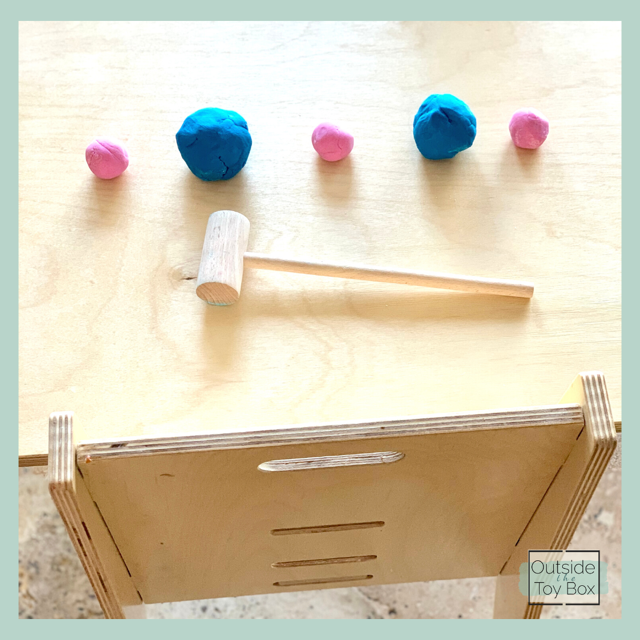
To set up this activity I used 2 different colors of play dough and made two different sizes of balls. I lined them up in a horizontal line in a repeating pattern. Then I only offered a hammer to keep it simple.
This setup was intentional so that we could practice:
- colors
- comparing sizes
- left to right progression
- hand eye coordination
- visual discrimination
- counting
- patterns
2. Add loose parts or toys for stamping
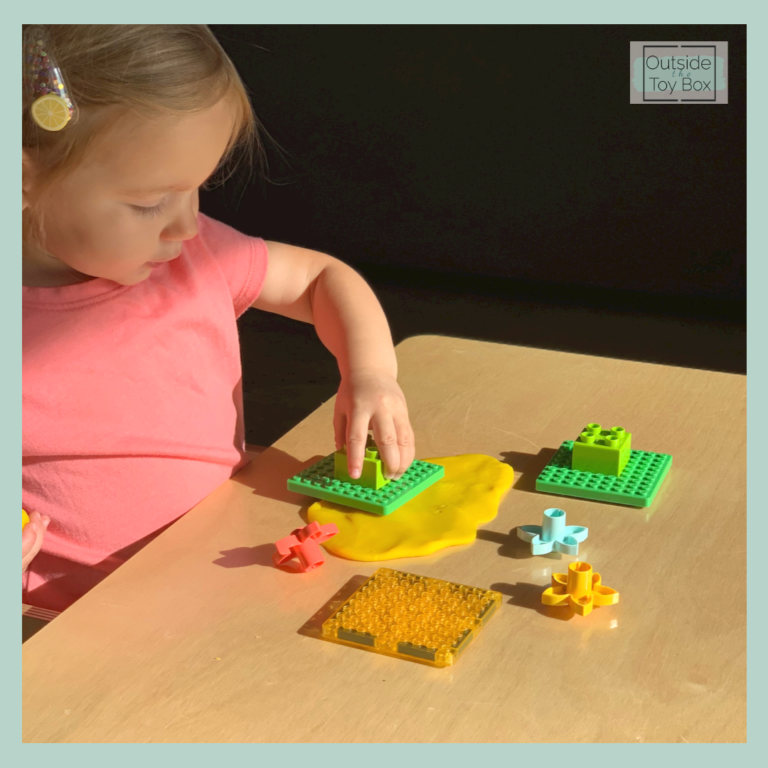
Loose parts are a fabulous addition to using play dough at home or in the classroom. Loose parts also have many benefits for infants and toddlers and there are so many ways to use loose parts in play.
We have used lots of different items to stamp or push into play dough because for a while that was Ruby’s favorite way to play with play dough at home.
The pictures setup includes MAGBRIX which are a magnetic tile that can also be used with Lego and Duplo. We also used Duplo and Duplo flowers for stamping. She liked to stamp the flowers and MAGBRIX best.
Get Over 100 Loose part ideas
Step up your open-ended play with this great resource!
3. Roll snakes and offer cutting tools
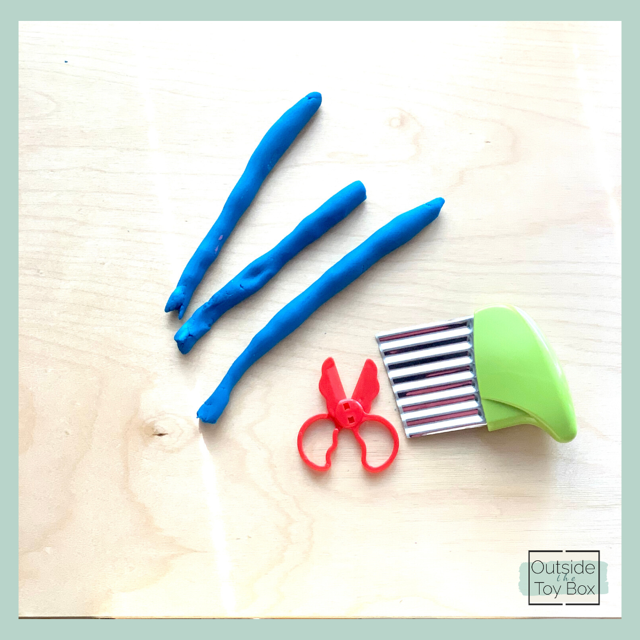
A great way to practice cutting skills, either with scissors or child-safe knives, is to use play dough. By rolling snakes, you offer your child an introduction to cutting because they just need to snip.
You can also introduce cutting utensils you want to use in the kitchen by practicing with play dough first. The crinkle cutter in the picture is fairly sharp so a good introduction and safety lesson is a good idea.
4. Fill shapes with play dough
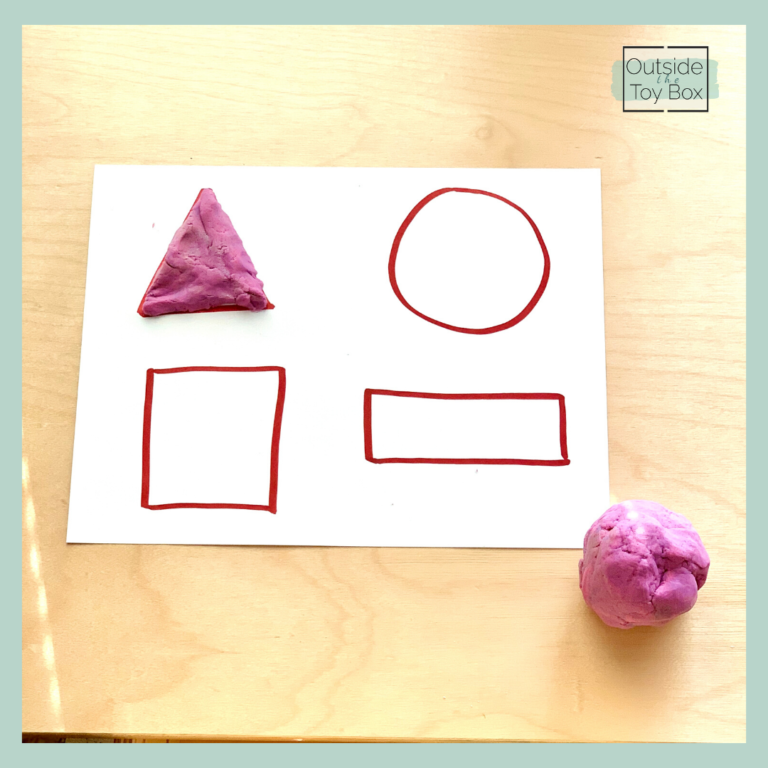
Practice spatial awareness, attributes and names of shapes by drawing shapes on cardstock or cutting shapes in cardboard and inviting your child to fill the shape with play dough. There will be ample opportunities to discuss angles and sides while also working fine motor muscles.
5. Create a simple matching game

Another fun way to play with play dough at home is to create a puzzle or matching game.
Simply grab some toys, objects, or puzzle pieces and push them into the play dough to make a clear imprint. Then present the objects next to the play dough and have your child match the objects to their prints.
6. Form letters or numbers with the play dough
We used our name puzzle from Busy Puzzle to push the letters into the play dough and match the letters. You could also use the puzzle as a stencil for creating the letters.
You don’t even need to have the name puzzle, you can simply create letters with the play dough on your own.
We have used this puzzle with other sensory play as well. So much fun!
7. Hide small toys or gems inside the play dough for a treasure hunt
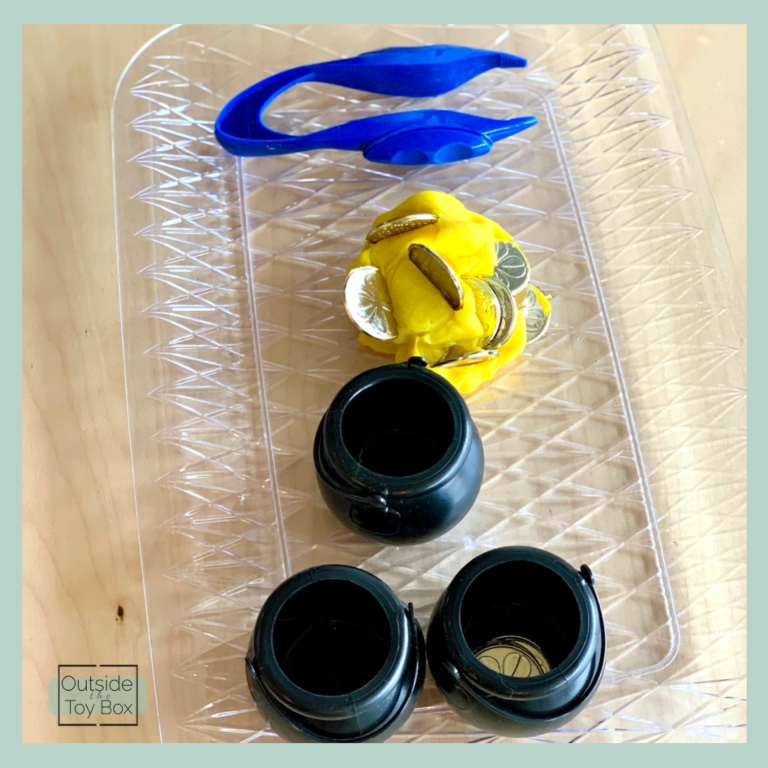
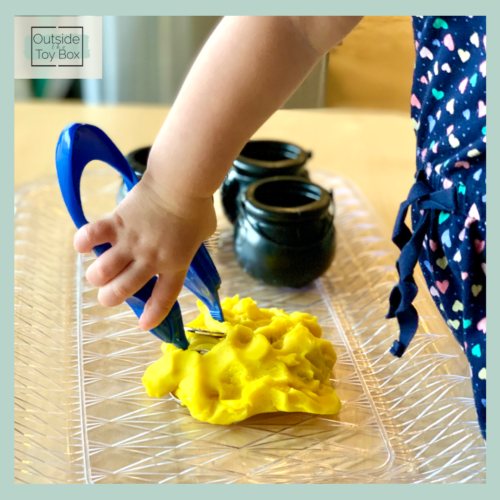
This is one of my favorite ways to play with play dough at home or in the classroom. There are so many variations and ways to practice different skills and concepts.
One way we’ve done this is with gold coins and tongs for St. Patrick’s day.
You can also hide gems, rocks, letters, numbers, or small toys. You can add picture cards for matching as well.
8. Use play dough with a muffin tin
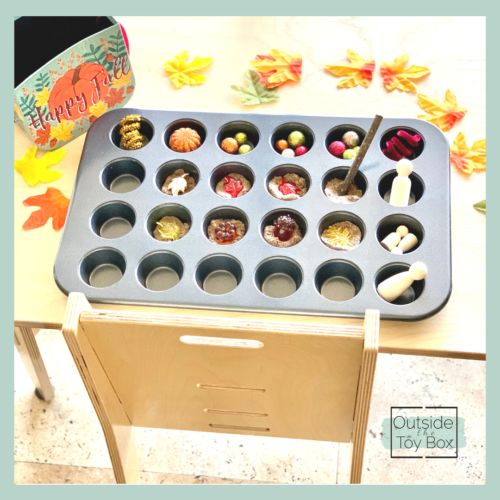

A muffin tin is a great tool to add to play dough. Not only are there many ways to play, but it also encourages the pincer grasp, which is important for writing, drawing, dressing, eating, and other daily life activities.
Try using it for some pretend baking or add some loose parts for a tinker tray. We used a mini muffin tin in the fall with some loose parts.
9. Practice addition and subtraction with balls of play dough
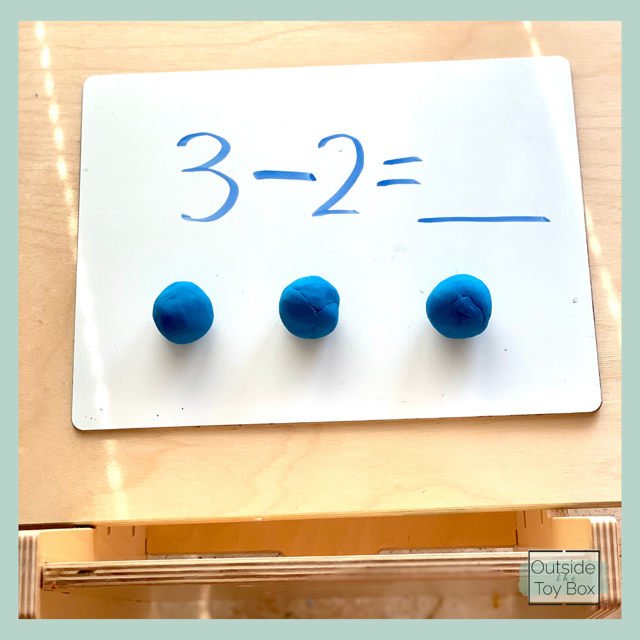
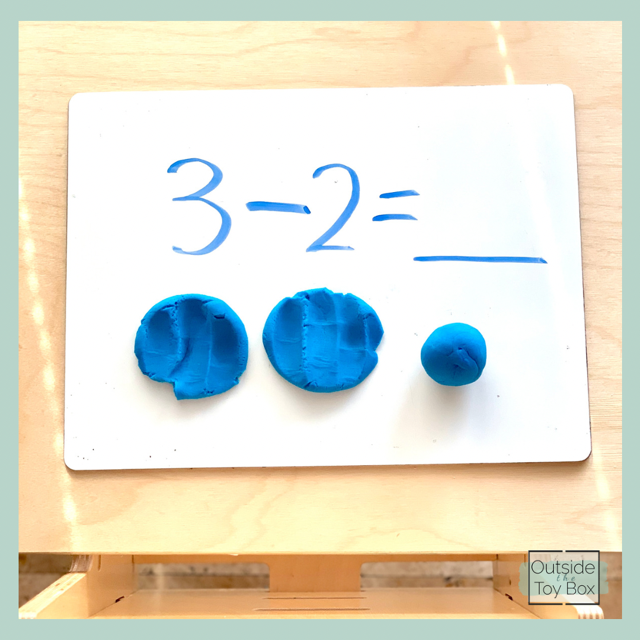
Here is a way to use play dough at home for learning academic skills. Using play dough for subtraction is a great way to visualize this abstract math concept. First, make the amount of balls to match the first number. Then, squish the amount of balls to match the second number. What you have left is the difference.
You could do similar with addition, except you would be creating balls of play dough and adding them together.
You could print out different problems to solve, solve problems from homework, or use a white board to write different equations.
10. Create small world scenes with animal figurines.
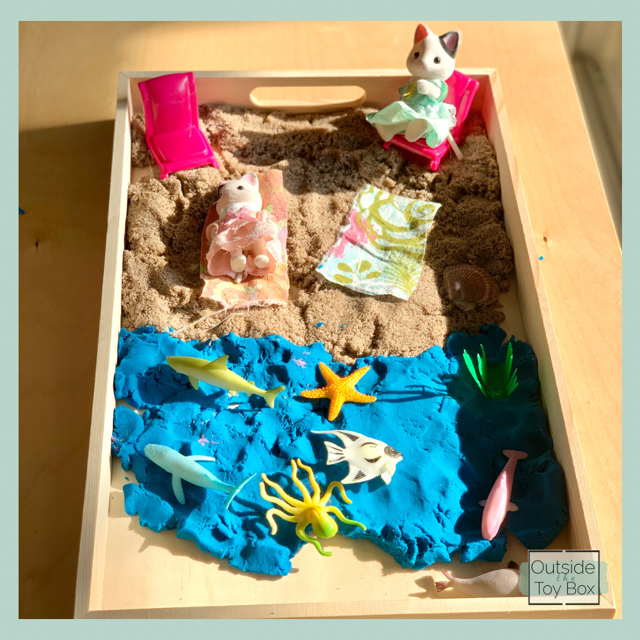
The benefit of making your play dough at home is that you get to make it any color you want. This allows you to make all sorts of small world play.
Make blue and create the ocean, lake, river, or pool. Make green to use as grass or leaves. Brown can be mud or dirt. Red can be flowers. You can be as creative as you want.
Ruby at 23 months is very interested in pretend play and her little Calico Critters, so I knew including them in some small world play would be a big hit. When you follow your child’s interests you get much more engaged play.
You can also get kits ready to go
Play at Home Mom Co. has so many great kits that are loosely themed in fun ways like Blippi, princesses, unicorns, and construction. Stop into her store to see all her options.
I hope you are now running over to your pantry to see if you have the ingredients to make play dough at home.
How else would you use play dough for play and learning? Tell me in the comments below.
You might also find these posts interesting:
Simple Sensory Set up to Support Fine Motor Development
What’s the Deal with Sensory Play
Want to remember this later?
Save it on Pinterest
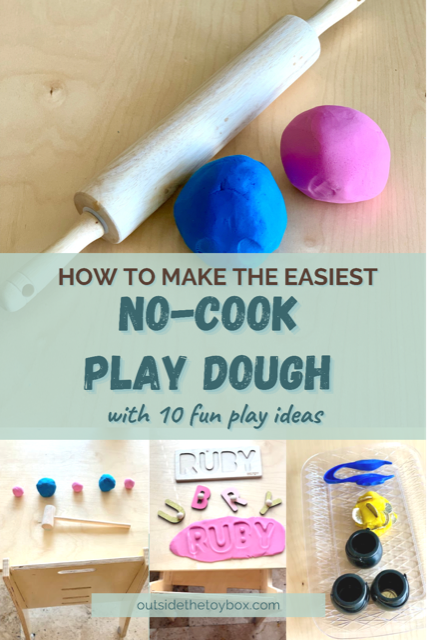
Follow us on Social Media to get daily play inspiration.
Facebook
Instagram
Pinterest

Share on facebook
Facebook
Share on pinterest
Pinterest
Share on email
Email
Share on print
Print
Please help to support my blogging efforts by sharing this post to others who may find some value in its contents.


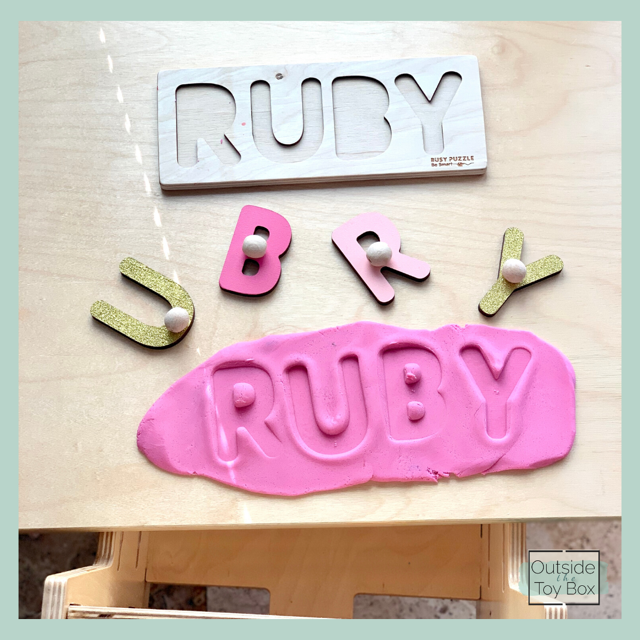
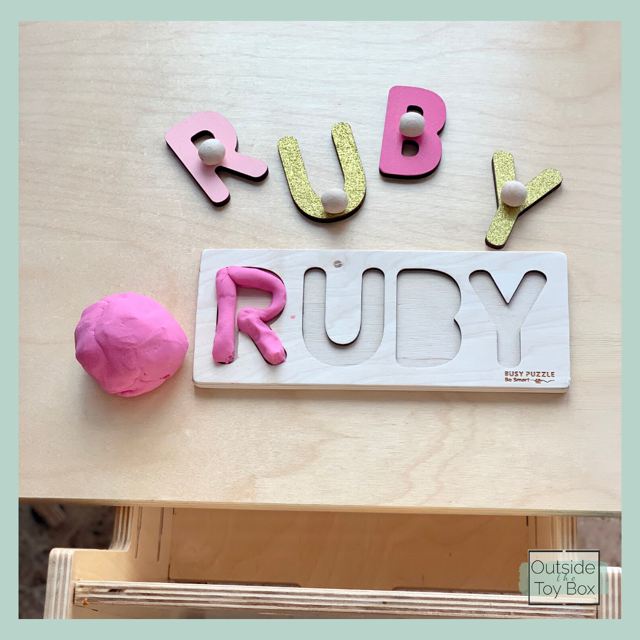
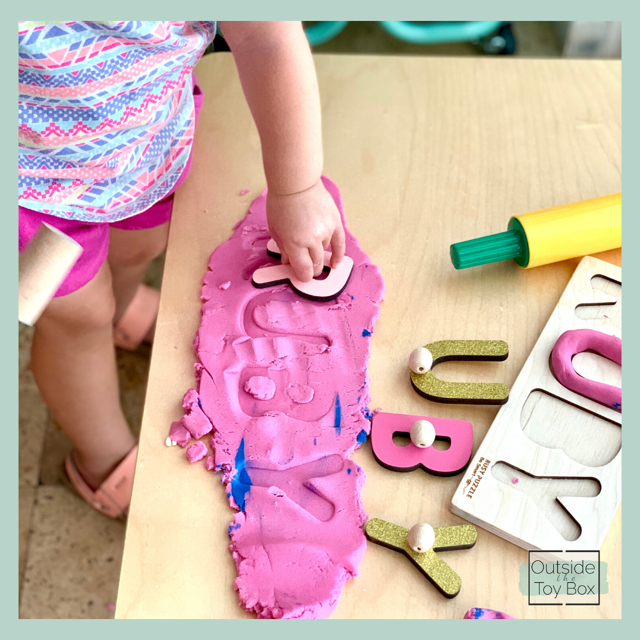
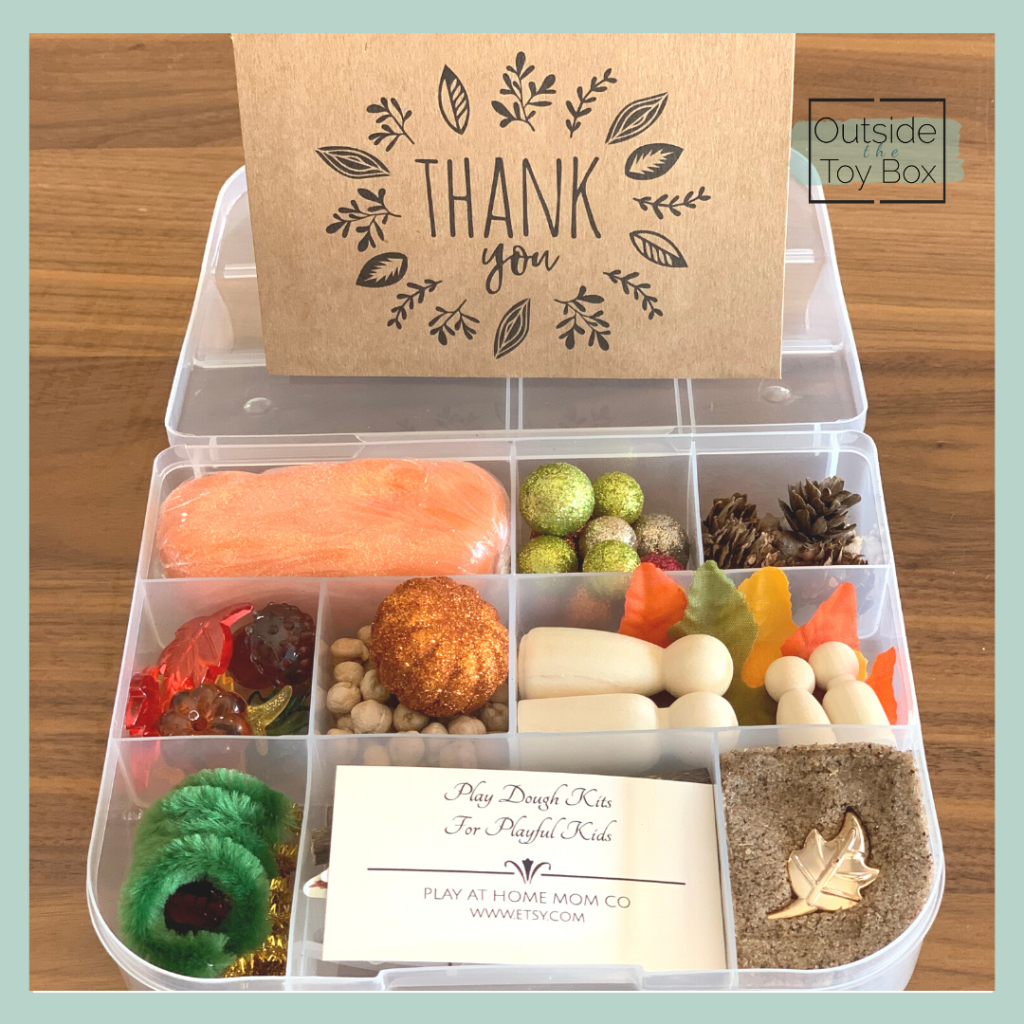
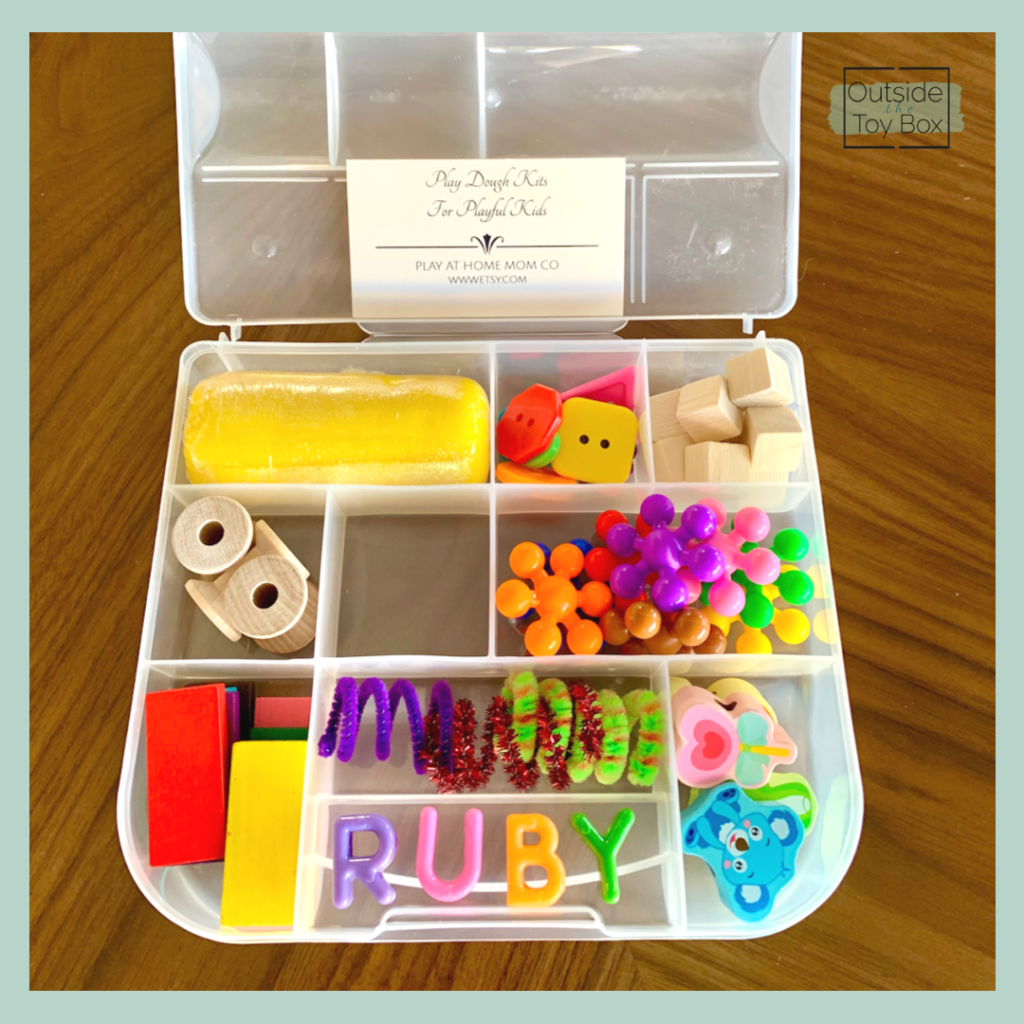
Trackbacks/Pingbacks